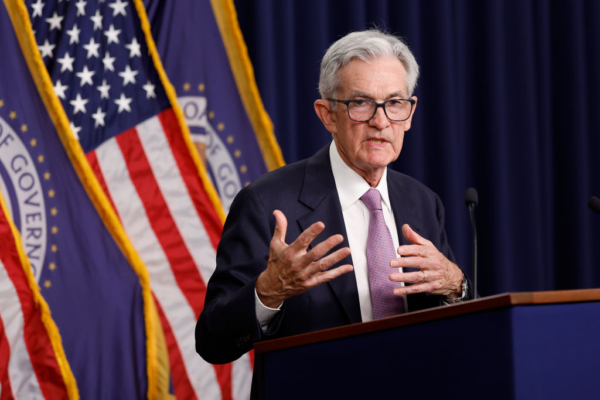The Federal Reserve will hold a meeting of senior officials this week. It is widely expected that due to the easing pressure of inflation in the United States, the Fed will cut interest rates once again.
The two-day interest rate meeting by the Fed is set to begin on Wednesday, November 6, with a anticipated announcement of a 0.25 percentage point rate cut on the following day, bringing the benchmark rate to around 4.6%.
Despite recent signs of cooling, the United States remains a bright spot in the global economy this year. The inflation rate is gradually approaching the Fed’s 2% target, economic growth remains strong, and the labor market continues to show unexpected resilience.
In June 2022, the inflation rate in the US surged to 9.1%, the highest in 40 years, leading to 11 interest rate hikes by the Fed to curb inflation. The key interest rate was eventually raised to around 5.3%, also the highest level in 40 years.
In September of this year, the annual inflation rate dropped to 2.4%, just slightly above the Fed’s 2% target and equal to the level in 2018. As a result, the Fed lowered the benchmark interest rate by 0.5 percentage point.
According to reports from The Associated Press, economists anticipate another 0.25 percentage point rate cut in December this year and possibly more similar measures next year. Rate cuts usually decrease borrowing costs for consumers and businesses.
The timing of this Fed meeting coincides with one of the most fiercely contested stages of the presidential election in decades. With a new president and Congress set to take office in January next year, there is concern that the election results could bring uncertainty to the Fed’s actions.
Republican presidential candidate and former President Trump has previously stated that if elected, he would impose a 60% tariff on Chinese goods and a 20% tariff on imports from other parts of the world to protect domestic industry.
Furthermore, Trump reiterated his criticism of Fed Chairman Jerome Powell and expressed his desire, as president, to have “at least” some say on interest rates.
During his previous term, Trump imposed tariffs on washing machines, solar panels, steel, and a range of goods from China, a policy that President Biden has maintained. While studies have shown that washing machine prices rose as a result, overall inflation did not significantly increase.
However, Trump is now proposing significantly broader tariffs, prompting concerns that the number of imported products facing taxation this time around could be ten times more than during his previous term.
Many economists are concerned that this could reignite inflation. A report from the Peterson Institute for International Economics estimates that Trump’s major tariff proposals could push inflation next year up by two percentage points from the original projection.
As the central bank of the United States, the Federal Reserve operates independently and has a dual mandate authorized by Congress: maintaining inflation at a long-term rate of 2% and keeping unemployment at the lowest sustainable level.
Under this division of responsibilities, the Fed is responsible for monetary policy, stimulating or curbing economic demand by adjusting the benchmark interest rate, while Congress and the White House handle fiscal matters through tax and spending policy adjustments.
Any changes to the Fed’s independence would require approval from Congress.
(This article references reports from Yahoo Finance and The Associated Press)

